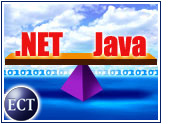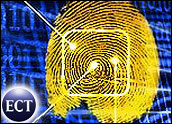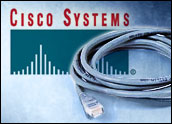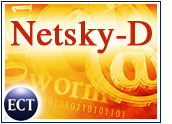
Virginia Tech, whose G5 Mac-based supercomputing cluster made headlines last fall as the third fastest supercomputer in the world, has announced it plans to migrate the cluster from Power Mac G5 desktop computers to Apple’s recently released Xserve G5 1U server.
According to Virginia Tech, the team that assembled the original cluster of 1,100 Power Mac G5s, known as “System X,” will begin the transition immediately. It is expected to be completed by May 2004.
Virginia Tech spokesperson Lynn Nystrom told the E-Commerce Times that, after negotiations with Apple, Virginia Tech found that the cost to optimize on the Xserves would be minimal. The cost to construct the original system was US$5.2 million — just a fraction of the total required to construct the world’s fastest and second-fastest supercomputers.
No Meltdown
IDC life sciences computing analyst Mike Swenson told the E-Commerce Times that, on the surface, it seems interesting that Virginia Tech is choosing to migrate from its big cluster of G5 towers to the 1U form factor, especially given that both the G5 Power Mac and the Xserve have similar processors and configurations.
Heat management becomes a particular concern with 1U form factors, Swenson said, because their close proximity often makes it difficult to control the level of heat. He noted that a friend who recently built a Linux cluster deemed it better to leave the processors in their original towers rather than risk heat damage to the overall cluster.
However, Doug Brooks, product manager for server hardware at Apple, told the E-Commerce Times that because the Xserve G5 is built to use less power, it generates much less heat than either the G5 Tower or many competing 1U rack-mount servers.
“We guarantee they won’t melt down,” Brooks said. “The Xserve, unlike many other rack-mount servers, does not violate the 1U space. You can fit 42 in a standard 42U rack.”
Size Does Matter
Virginia Tech’s Nystrom said switching to the Xserve G5 will dramatically reduce the amount of space System X uses, from 3,000 to 1,000 square feet. Freeing that amount of space also will help with heating and cooling issues.
According to Brooks, switching to Xserves will give Virginia Tech greater flexibility in how it scales its cluster in the future. Moreover, unlike the G5 tower, Apple engineers designed and built the Xserve from the ground up for these types of situations. System administrators can manage the cluster remotely and can monitor the health and status of every Xserve in the cluster.
Nystrom agreed, saying the Xserve better fits the cluster design. It fits easily into standard racks, and its panel of LED lights provides administrators with instantaneous information about each individual Xserve.
Tom Goguen, director for server software at Apple, joked that the Xserve offers more LED lights per dollar than any competing 1U server on the market.
Serving the Right Software
Goguen told the E-Commerce Times that, unlike the present G5 Towers, which are powered by the Mac desktop operating system, the replacement Xserves run on Mac OS Server 10.3, also known as “Panther.”
“Panther is fully optimized for the G5 platform … [offering] management tools and managed software solutions [that provide] Virginia Tech with much more flexibility on how they can choose to deploy the cluster,” he said.
Nystrom confirmed that the ability to use Panther Server was yet another factor in Virginia Tech’s decision.
Price/Performance Wow
When Virginia Tech’s Apple G5 cluster first was announced last fall, many industry observers noted that its stellar price/performance ratio stood in sharp contrast with Apple’s past reputation for high-priced hardware.
IDC analyst Swenson said the G5, along with Apple’s Unix-based OS X, has changed that reputation. In fact, he said, price/performance ratio was Virginia Tech’s argument for choosing Mac computers in the first place.
Others have taken notice of this shift. Nystrom noted that Virginia Tech has received a host of inquiries from NASA, JPL and the National Security Administration (NSA), among others, about using the G5 cluster to perform calculations. She said the university is determining how much it plans to charge for these services.
“We have a much greater ability now to attract research contracts that cannot be accomplished by other schools,” she said, “and we now have the ability to sell time to these agencies that need these calculations done.”













































Social Media
See all Social Media